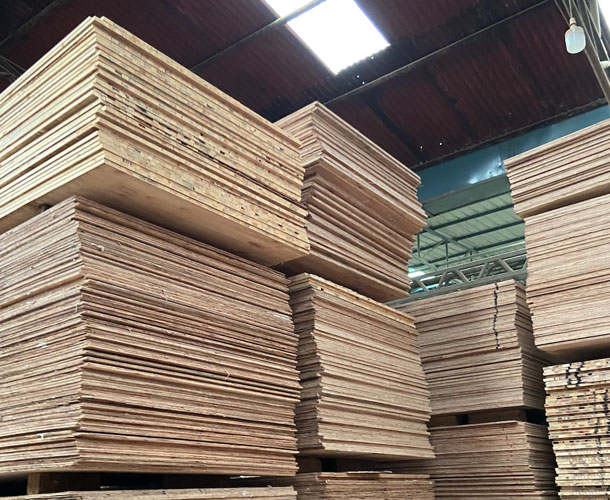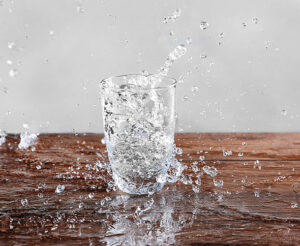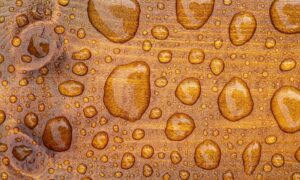Plywood is a versatile and essential material in construction and furniture making. Have you ever wondered what makes it so special? Plywood is an engineered wood sheet material made up of fine layers or strands of wood veneers glued together with grains at 90 degrees to one another.
1. What is Plywood?
Definition
Plywood is an assemblage of wood veneers bonded together to produce a flat sheet. It typically consists of at least three plies, with the grain in alternate plies running at right angles.
Brief History
The concept of laminating thin layers of wood dates back to ancient Egypt. However, modern plywood was invented in the early 20th century and has evolved to become a staple in various industries, from construction to furniture making.
2. Types of Plywood
Softwood Plywood
Known as spruce-pine-fir or SPF, softwood plywood is made from spruce, pine, fir, cedar, and Douglas fir.
Common Uses: It is widely used in construction and shuttering due to its strength and versatility.
Hardwood Plywood
Made from angiosperms, hardwood plywood is characterized by its firmness, hardness, and resistance.
Common Uses: Ideal for heavy-weight bearing applications like furniture and cabinetry.
Tropical Plywood
This type is made from tropical timber, originally sourced from Asia and Africa and America.
Common Uses: Used in various construction and industrial applications.
Aircraft Plywood
Made from high-quality mahogany, spruce, and birch, it is known for its strength and heat resistance.
Common Uses: Used in aircraft construction and other high-strength applications.
Decorative Plywood
Also known as overlaid plywood, it is made from woods like ash, oak, red oak, birch, maple, mahogany, seraya, and rosewood.
Common Uses: Used in furniture and interior design for its aesthetic appeal.
Flexible Plywood
Made from Baltic Birch, this type makes flexible furniture and curved structures.
Common Uses: Popular in the production of curved 18th-century style furniture.
Marine Plywood
Marine plywood is designed for wet and humid environments and is resistant to fungal growth and moisture.
Common Uses: Ideal for marine and boat construction and other outdoor projects.
3. Specialized Plywood for Unique Needs
BWP Plywood
Waterproof Wonder: BWP plywood laughs in the face of water. It’s designed to withstand moisture and humidity, so it’s the perfect choice for environments where water resistance is non-negotiable.
Film-Faced Shuttering Plywood
Casting Concrete Champions: Film-faced shuttering plywood is the unsung hero of construction sites. Its smooth, durable surface provides the perfect canvas for pouring concrete, ensuring flawless finishes every time.
Flush Door Plywood
Sleek and Solid: Flush door plywood brings sophistication to door design. Its flat, seamless surface lends itself to sleek, modern aesthetics, making it the preferred choice for contemporary interiors.
4. Groupings of Plywood Products
- Structural Plywood: Used for load-bearing applications.
- Exterior Plywood: Designed for outdoor use, resistant to weather conditions.
- Interior Plywood: Used for indoor applications, offering aesthetic appeal.
- Marine Plywood: Highly resistant to water, making it ideal for marine and high-moisture environments.
5. Standard Plywood Thickness
Description: Plywood thickness is determined by the number of layers of wood veneer glued together. Common thicknesses are 3/4 inch, 1/2 inch, and 1/4 inch.
6. Advantages of Plywood
Increased Stability
Plywood offers all the inherent advantages of wood plus enhanced properties due to its laminated structure.
High Impact Resistance
Plywood can accommodate short-term overloads, making it useful in areas prone to seismic activity or high winds.
Surface Dimensional Stability
The cross-laminated construction ensures stability under temperature and moisture changes.
High Strength-to-Weight Ratio
Plywood’s strength and stiffness make it cost-effective for structural applications.
Panel Shear
Nearly double that of solid timber due to its cross-laminated structure.
Chemical Resistance
Plywood does not corrode and can be treated to resist chemicals.
7. Common Uses of Plywood
- Cladding, External: Timber cladding offers strength, acoustic, and thermal performance with natural appeal.
- Doors: Timber is a popular choice for both internal and external doors.
- Flooring: Timber flooring is popular for its warmth, strength, and beauty.
- Framing: Lightweight timber construction is a common type of wooden framing.
- Joinery: Timber joinery adds a classic, stylish touch to interiors and exteriors.
- Panelling, Interior: Timber paneling provides warmth and style, as solid timber panels or engineered wood sheets.
- Portal Frames: Timber portal frames are effective for buildings requiring large spans and column-free interiors.
- Rails and Balustrades, Interior: Timber is a popular choice for internal balustrades, finished with a clear lacquer.
- Shear Walls: Effective for resisting lateral loads such as wind or earthquakes.
- Stairs, Exterior: Timber is ideal for external staircases, offering strength and natural beauty.
- Stairs, Interior: Timber is preferred for internal staircases due to its strength, beauty, and durability.
8. How Plywood is Made
Materials Used
Various types of wood and adhesives are used in plywood manufacturing.
Manufacturing Process
- Harvesting and Peeling Logs: Logs are harvested and peeled into thin veneers.
- Drying Veneers: The veneers are dried to the appropriate moisture content.
- Glue Application and Pressing: Adhesives are applied, and veneers are pressed together under heat and pressure.
- Finishing: The plywood sheets are sanded and cut to size.
9. Grades of Plywood
Grading System Overview
Plywood is graded based on its quality, with grades A, B, C, and D.
Different Grades
- Grade A: Smooth, sanded surface with minimal defects, ideal for high-quality finishes.
- Grade B: Solid surface with some minor repairs, suitable for painting or where a smooth finish is desired.
- Grade C: Contains knots and defects, used where appearance is not critical.
- Grade D: The lowest grade with visible defects, used for structural purposes where appearance is not a concern.
10. Plywood vs. Other Wood Products
Plywood vs. MDF (Medium Density Fiberboard)
MDF is denser and heavier but lacks the grain structure of plywood.
Plywood vs. Particleboard
Particleboard is made from wood chips and resin and is less strong and more prone to damage than plywood.
Plywood vs. Solid Wood
Solid wood is a single piece of lumber, offering natural beauty and strength but at a higher cost and more susceptibility to warping.
11. How to Choose the Right Plywood
Consider the Application
Match the type of plywood to the intended use, considering factors like moisture exposure and structural needs.
Check the Grade
Ensure the grade matches the project requirements for quality and appearance.
Look for Certifications
Choose plywood with certifications like FSC (Forest Stewardship Council) to ensure sustainable sourcing.
Plywood isn’t just a building material; it’s a gateway to endless possibilities. From its humble origins to its diverse applications, plywood continues to shape the world around us. So, the next time you marvel at a sturdy structure or sink into a sumptuous sofa, remember – it all begins with a humble sheet of plywood.



